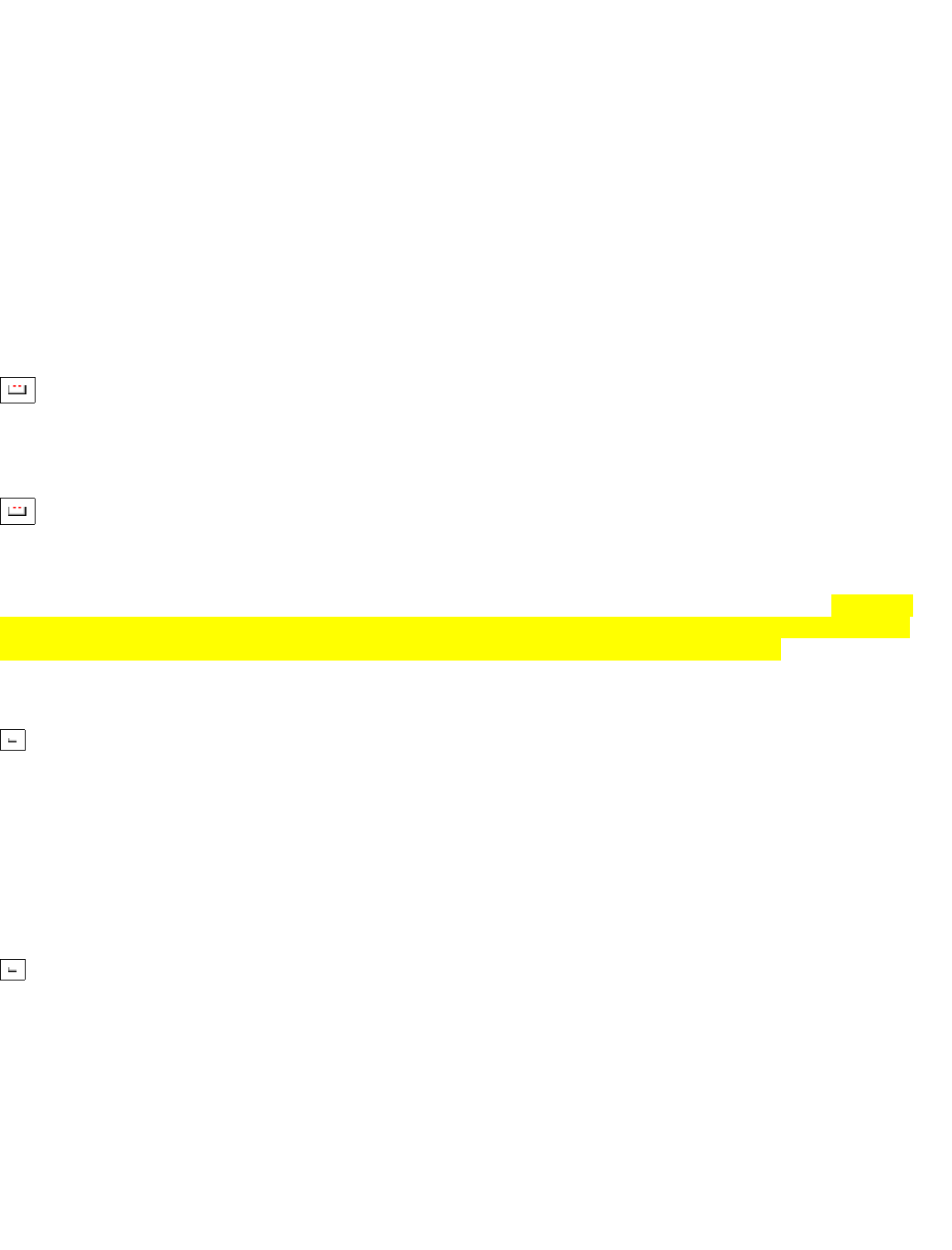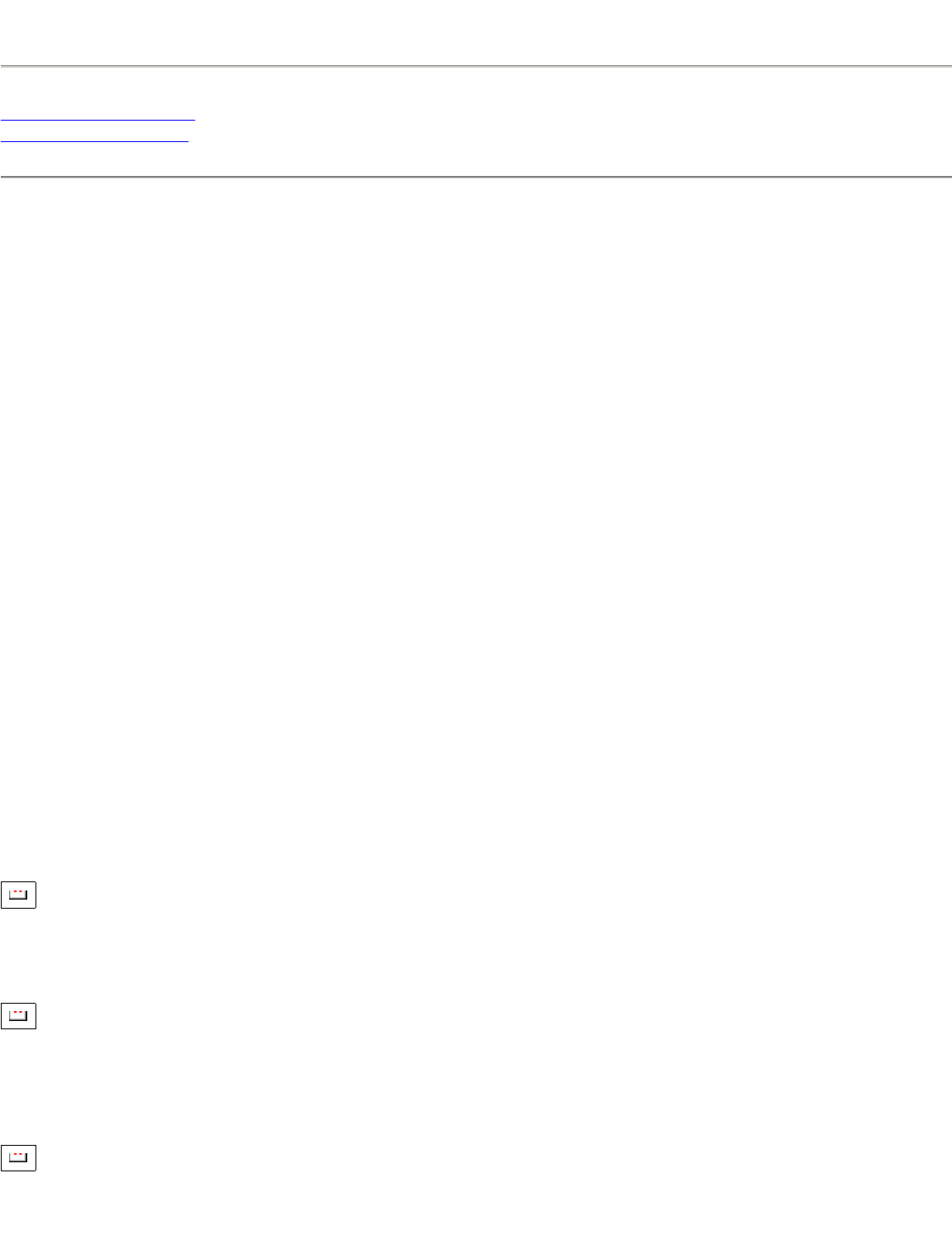Dell 5HCKT 802.11a/b/g Mini PCI type 3B Card User Manual
Dell Inc. 802.11a/b/g Mini PCI type 3B Card Users Manual
Dell >
Contents
CRN 27331 Q2 Revised user manual

Back to Contents
Regulatory Information: Intel(R) PRO/Wireless
Network Connection User's Guide
Intel(R) PRO/Wireless 2200BG Network Connection
Intel(R) PRO/Wireless 2915ABG Network Connection
Intel(R) PRO/Wireless 2915ABG Network Connection
Information for the User
Regulatory Information
Intel(R) PRO/Wireless 2200BG Network Connection
Information for the User
Regulatory Information
Intel(R) PRO/Wireless 2915ABG Network Connection
The information in this document applies to the following products:
Tri-mode wireless LAN adapters (802.11a/802.11b/802.11g )
Intel(R) PRO/Wireless 2915ABG Network Connection (model WM3B2915ABG)
Intel(R) PRO/Wireless 2915ABG Network Connection (model WM3A2915ABG)
Information for the user
Safety Notices
The FCC with its action in ET Docket 96-8 has adopted a safety standard for human exposure to radio frequency (RF)
electromagnetic energy emitted by FCC certified equipment. The Intel(R) PRO/Wireless 2915ABG Network
Connection adapter meets the Human Exposure limits found in OET Bulletin 65, 2001, and ANSI/IEEE C95.1, 1992.
Proper operation of this radio according to the instructions found in this manual will result in exposure substantially
below the FCC’s recommended limits.
The following safety precautions should be observed:
lDo not touch or move antenna while the unit is transmitting or receiving.
lDo not hold any component containing the radio such that the antenna is very close or touching any exposed
parts of the body, especially the face or eyes, while transmitting.
lDo not operate the radio or attempt to transmit data unless the antenna is connected; if not, the radio may be
damaged.
lUse in specific environments:
¡
The use of wireless devices in hazardous locations is limited by the constraints posed by the safety
NOTE:Due to the evolving state of regulations and standards in the wireless LAN field (IEEE 802.11 and similar
standards), the information provided herein is subject to change. Intel Corporation assumes no
responsibility for errors or omissions in this document. Nor does Intel make any commitment to update the
information contained herein.

directors of such environments.
¡The use of wireless devices on airplanes is governed by the Federal Aviation Administration (FAA).
¡The use of wireless devices in hospitals is restricted to the limits set forth by each hospital.
lAntenna use:
¡In order to comply with FCC RF exposure limits, low gain integrated antennas should be located at a
minimum distance of 20 cm (8 inches) or more from the body of all persons.
¡High-gain, wall-mount, or mast-mount antennas are designed to be professionally installed and should be
located at a minimum distance of 30 cm (12 inches) or more from the body of all persons. Please contact
your professional installer, VAR, or antenna manufacturer for proper installation requirements.
lExplosive Device Proximity Warning (see below)
lAntenna Warning (see below)
lUse on Aircraft Caution (see below)
lOther Wireless Devices (see below)
lPower Supply (Access Point) (see below)
Explosive Device Proximity Warning
Warning: Do not operate a portable transmitter (such as a wireless network device) near unshielded blasting caps
or in an explosive environment unless the device has been modified to be qualified for such use.
Antenna Warnings
Warning: To comply with the FCC and ANSI C95.1 RF exposure limits, it is recommended for the Intel(R)
PRO/Wireless 2915ABG Network Connection adapter installed in a desktop or portable computer, that the antenna for
this device be installed so as to provide a separation distance of al least 20 cm (8 inches) from all persons and that the
antenna must not be co-located or operating in conjunction with any other antenna or radio transmitter. It is
recommended that the user limit exposure time if the antenna is positioned closer than 20 cm (8 inches). In case of
antennas are installed within 20 cm separation distance from the antennas to the body of user, SAR evaluation has
performed to demonstrate RF exposure compliance in the typical lap held operating configuration.
Use On Aircraft Caution
Caution: Regulations of the FCC and FAA prohibit airborne operation of radio-frequency wireless devices because
their signals could interfere with critical aircraft instruments.
Other Wireless Devices
Safety Notices for Other Devices in the Wireless Network: Refer to the documentation supplied with wireless
Ethernet adapters or other devices in the wireless network.
Local Restrictions on 802.11a and 802.11b Radio Usage
Caution: Due to the fact that the frequencies used by 802.11a and 802.11b wireless LAN devices may not yet be
harmonized in all countries, 802.11a and 802.11b products are designed for use only in specific countries, and are not
allowed to be operated in countries other than those of designated use. As a user of these products, you are responsible
for ensuring that the products are used only in the countries for which they were intended and for verifying that they are
configured with the correct selection of frequency and channel for the country of use. The device transmit power
control (TPC) interface is part of the Intel(R) PROSet/Wireless software. Operational restrictions for Equivalent
Isotropic Radiated Power (EIRP) are provided by the system manufacturer. Any deviation from the permissible power
and frequency settings for the country of use is an infringement of national law and may be punished as such.
For country-specific information, see the additional compliance information supplied with the product.
Wireless interoperability

The Intel(R) PRO/Wireless 2915ABG Network Connection adapter is designed to be interoperable with other wireless
LAN products that are based on direct sequence spread spectrum (DSSS) radio technology and to comply with the
following standards:
lIEEE Std. 802.1b-1999. Standard on Wireless LAN.
lWireless Fidelity (WiFi) certification, as defined by the WECA (Wireless Ethernet Compatibility Alliance).
The Intel(R) PRO/Wireless 2915ABG Network Connection adapter and your health
The Intel(R) PRO/Wireless 2915ABG Network Connection adapter, like other radio devices, emits radio frequency
electromagnetic energy. The level of energy emitted by this device, however, is less than the electromagnetic energy
emitted by other wireless devices such as mobile phones. The Intel(R) PRO/Wireless 2915ABG Network Connection
adapter wireless device operates within the guidelines found in radio frequency safety standards and recommendations.
These standards and recommendations reflect the consensus of the scientific community and result from deliberations
of panels and committees of scientists who continually review and interpret the extensive research literature. In some
situations or environments, the use of the Intel(R) PRO/Wireless 2915ABG Network Connection adapter wireless
device may be restricted by the proprietor of the building or responsible representatives of the applicable organization.
Examples of such situations include the following:
lUsing the Intel(R) PRO/Wireless 2915ABG Network Connection adapter equipment on board airplanes, or
lUsing the Intel(R) PRO/Wireless 2915ABG Network Connection adapter equipment in any other environment
where the risk of interference with other devices or services is perceived or identified as being harmful
If you are uncertain of the policy that applies to the use of wireless devices in a specific organization or environment
(an airport, for example), you are encouraged to ask for authorization to use the Intel(R) PRO/Wireless 2915ABG
Network Connection adapter wireless device before you turn it on.
Regulatory information
Information for the OEMs and Integrators:
The following statement must be included with all versions of this document supplied to an OEM or integrator, but
should not be distributed to the end user.
lThis device is intended for OEM integrators only.
lThis device cannot be co-located with any other transmitter.
lPlease refer to the full Grant of Equipment document for other restrictions.
lThis device must be operated and used with a locally approved AP.
Information To Be Supplied to the End User by the OEM or Integrator
The following regulatory and safety notices must be published in documentation supplied to the end user of the product
or system incorporating an Intel(R) PRO/Wireless 2915ABG Network Connection in compliance with local
regulations.
The Intel(R) PRO/Wireless 2915ABG Network Connection adapter wireless network device must be installed and used
in strict accordance with the manufacturer's instructions as described in the user documentation that comes with the
product. For country-specific approvals, see Radio approvals. Intel Corporation is not responsible for any radio or
television interference caused by unauthorized modification of the devices included with the Intel(R) PRO/Wireless
2915ABG Network Connection adapter kit, or the substitution or attachment of connecting cables and equipment other
than that specified by Intel Corporation. The correction of interference caused by such unauthorized modification,
substitution or attachment is the responsibility of the user. Intel Corporation and its authorized resellers or distributors
are not liable for any damage or violation of government regulations that may arise from the user failing to comply with
these guidelines.

Local Restriction of 802.11a and 802.11b Radio Usage
The following statement on local restrictions must be published as part of the compliance documentation for all
802.11a and 802.11b products.
Caution: Due to the fact that the frequencies used by 802.11a and 802.11b wireless LAN devices may not yet be
harmonized in all countries, 802.11a and 802.11b products are designed for use only in specific countries, and are not
allowed to be operated in countries other than those of designated use. As a user of these products, you are responsible
for ensuring that the products are used only in the countries for which they were intended and for verifying that they are
configured with the correct selection of frequency and channel for the country of use. Any deviation from permissible
settings and restrictions in the country of use could be an infringement of national law and may be punished as such.
FCC Radio Frequency Interference Requirements
This device is restricted to indoor use due to its operation in the 5.15 to 5.25 GHz frequency range. FCC requires this
product to be used indoors for the frequency range 5.15 to 5.25 GHz to reduce the potential for harmful interference to
co-
channel Mobile Satellite systems. High power radars are allocated as primary users of the 5.25 to 5.35 GHz and 5.65
to 5.85 GHz bands. These radar stations can cause interference with and /or damage this device.
lThis device is intended for OEM integrators only.
lThis device cannot be co-located with any other transmitter.
USA—Federal Communications Commission (FCC)
This device complies with Part 15 of the FCC Rules. Operation of the device is subject to the following two conditions:
lThis device may not cause harmful interference.
lThis device must accept any interference that may cause undesired operation.
In case of antennas are installed within 20 cm separation distance from the antennas to the body of user, SAR
evaluation has performed to demonstrate RF exposure compliance in the typical lap held operating configuration."
Caution: This device is restricted to indoor use due to its operation in the 5.15 to 5.25 GHz frequency range. FCC
requires this product to be used indoors for frequency range 5.15 to 5.25 GHz to reduce the potential for harmful
interference to co-channel Mobile Satellite systems. High power radars are allocated as primary users of the 5.25 to
5.35 GHz and 5.65 to 5.85 GHz bands. These radar stations can cause interference with and/or damage this device.
Interference statement
This equipment has been tested and found to comply with the limits for a Class B digital device, pursuant to Part 15 of
the FCC Rules. These limits are designed to provide reasonable protection against harmful interference in a residential
installation. This equipment generates, uses, and can radiate radio frequency energy. If the equipment is not installed
and used in accordance with the instructions, the equipment may cause harmful interference to radio communications.
There is no guarantee, however, that such interference will not occur in a particular installation. If this equipment does
cause harmful interference to radio or television reception (which can be determined by turning the equipment off and
on), the user is encouraged to try to correct the interference by taking one or more of the following measures:
l
Reorient or relocate the receiving antenna.
NOTE:The radiated output power of the Intel(R) PRO/Wireless 2915ABG Network Connection adapter wireless
network device is far below the FCC radio frequency exposure limits. Nevertheless, the Intel(R)
PRO/Wireless LAN wireless network device should be used in such a manner that the potential for human
contact during normal operation is minimized. To avoid the possibility of exceeding the FCC radio
frequency exposure limits, you should keep a distance of at least
20 cm between you (or any other person in the vicinity) and the antenna that is built into the computer.

lIncrease the distance between the equipment and the receiver.
lConnect the equipment to an outlet on a circuit different from that to which the receiver is connected.
lConsult the dealer or an experienced radio/TV technician for help.
Canada—Industry Canada (IC)
This device complies with RSS210 of Industry Canada.
This Class B digital apparatus complies with Canadian ICES-003, Issue 2, and RSS-210, No 4 (Dec 2000) and No 5
(Nov 2001).
Cet appariel numérique de la classe B est conforme à la norme NMB-003, No. 2, et CNR-
210, No 4 (Dec 2000) et No 5
(Nov 2001)..
"To prevent radio interference to the licensed service, this device is intended to be operated indoors and away from
windows to provide maximum shielding. Equipment (or its transmit antenna) that is installed outdoors is subject to
licensing."
« Pour empêcher que cet appareil cause du brouillage au service faisant l'objet d'une licence, il doit être utilisé a
l'intérieur et devrait être placé loin des fenêtres afinde fournir un écran de blindage maximal. Si le matériel (ou son
antenne d'émission) est installé à l'extérieur, il doit faire l'objet d'une licence. »
Europe Frequency Bands
2.400 - 2.4835 GHz (Europe ETSI)
5.15 - 5.35 GHz and 5.47-5.725 GHz (Europe ETSI)
5.15-5.25 can be used outdoors and all other 5 GHz supported must be indoors
Low band 5.25 - 5.35 GHz is for indoor use only
5.47 - 5.725 GHz is not allowed in Austria, France and Switzerland
Declaration of Conformity
This equipment complies with the essential requirements of the European Union directive 1999/5/EC.
NOTE:The Intel(R) PRO/Wireless 2915ABG Network Connection adapter wireless network device must be
installed and used in strict accordance with the manufacturer's instructions as described in the user
documentation that comes with the product. Any other installation or use will violate FCC Part 15
regulations.
English Hereby, Intel(R) Corporation, declares that this Intel(R) PRO/Wireless 2915ABG
Network Connection is in compliance with the essential requirements and other
relevant provisions of Directive 1999/5/EC.
Finnish Intel(R) Corporation vakuuttaa täten että Intel(R) PRO/Wireless 2915ABG Network
Connection tyyppinen laite on direktiivin 1999/5/EY oleellisten vaatimusten ja sitä
koskevien direktiivin muiden ehtojen mukainen.
Dutch Hierbij verklaart Intel(R) Corporation dat het toestel Intel(R) PRO/Wireless 2915ABG
Network Connection in overeenstemming is met de essentiële eisen en de andere
relevante bepalingen van richtlijn 1999/5/EG
Bij deze verklaart Intel(R) Corporation dat deze Intel(R) PRO/Wireless 2915ABG
Network Connection voldoet aan de essentiële eisen en aan de overige relevante
bepalingen van Richtlijn 1999/5/EC.

New Member States requirements of Declaration of Conformity
French Par la présente Intel(R) Corporation déclare que l'appareil Intel(R) PRO/Wireless
2915ABG Network Connection est conforme aux exigences essentielles et aux autres
dispositions pertinentes de la directive 1999/5/CE
Par la présente, Intel(R) Corporation déclare que ce Intel(R) PRO/Wireless 2915ABG
Network Connection est conforme aux exigences essentielles et aux autres dispositions
de la directive 1999/5/CE qui lui sont applicables
Swedish Härmed intygar Intel(R) Corporation att denna Intel(R) PRO/Wireless 2915ABG
Network Connection står I överensstämmelse med de väsentliga egenskapskrav och
övriga relevanta bestämmelser som framgår av direktiv 1999/5/EG.
Danish Undertegnede Intel(R) Corporation erklærer herved, at følgende udstyr Intel(R)
PRO/Wireless 2915ABG Network Connection overholder de væ sentlige krav og ø
vrige
relevante krav i direktiv 1999/5/EF
German Hiermit erklärt Intel(R) Corporation, dass sich dieser/diese/dieses Intel(R)
PRO/Wireless 2915ABG Network Connection in Ü bereinstimmung mit den
grundlegenden Anforderungen und den anderen relevanten Vorschriften der Richtlinie
1999/5/EG befindet". (BMWi)
Hiermit erklärt Intel(R) Corporation die Übereinstimmung des Gerätes Intel(R)
PRO/Wireless 2915ABG Network Connection mit den grundlegenden Anforderungen
und den anderen relevanten Festlegungen der Richtlinie 1999/5/EG. (Wien)
Greek ?? ??? ?????S? Intel(R) Corporation ???O??? ??? Intel(R) PRO/Wireless
2915ABG Network Connection S?????FO????? ???S ??S ??S?O???S
??????S??S ??? ??S ?????S S??????S ????????S ??S ???G??S
1999/5/??
Italian Con la presente Intel(R) Corporation dichiara che questo Intel(R) PRO/Wireless
2915ABG Network Connection è conforme ai requisiti essenziali ed alle altre
disposizioni pertinenti stabilite dalla direttiva 1999/5/CE
Spanish Por medio de la presente Intel(R) Corporation declara que el Intel(R) PRO/Wireless
2915ABG Network Connection cumple con los requisitos esenciales y cualesquiera
otras disposiciones aplicables o exigibles de la Directiva 1999/5/CE
Portuguese Intel(R) Corporation declara que este Intel(R) PRO/Wireless 2915ABG Network
Connection está conforme com os requisitos essenciais e outras disposições da
Directiva 1999/5/CE.
Malti Hawnhekk, Intel(R) Corporation, jiddikjara li dan Intel(R) PRO/Wireless 2915ABG
Network Connection jikkonforma mal-htigijiet essenzjali u ma provvedimenti ohrajn
relevanti li hemm fid-Dirrettiva 1999/5/EC
Estonian Käesolevaga kinnitab Intel(R) Corporation seadme Intel(R) PRO/Wireless
2915ABG Network Connection vastavust direktiivi 1999/5/EÜ põhinõ
uetele ja
nimetatud direktiivist tulenevatele teistele asjakohastele sätetele.
Hungary Alulírott, Intel(R) Corporation nyilatkozom, hogy a Intel(R) PRO/Wireless
2915ABG Network Connection megfelel a vonatkozó alapvetõ
követelményeknek és az 1999/5/EC irányelv egyéb elõírásainak
Slovak Intel(R) Corporation týmto vyhlasuje, že Intel(R) PRO/Wireless 2915ABG
Network Connection splna základné požiadavky a všetky príslušné
ustanovenia Smernice 1999/5/ES.
Czech Intel(R) Corporation tímto prohlašuje, že tento Intel(R) PRO/Wireless
2915ABG Network Connection je ve shode se základními požadavky a
dalšími príslušnými ustanoveními smernice 1999/5/ES."
Slovenia Šiuo Intel(R) Corporation deklaruoja, kad šis Intel(R) PRO/Wireless
2915ABG Network Connection atitinka esminius reikalavimus ir kitas
1999/5/EB Direktyvos nuostatas.

France
For Metropolitan departments
2.400 - 2.4835 GHz for indoor use
2.400 -2.454 GHz (channels 1 to 7) for outdoor use
Some areas of France have a restricted frequency band. The worst case maximum authorized power indoors is:
l10 mW for the entire 2.4 GHz band (2400 MHz–2483.5 MHz)
l100 mW for frequencies between 2446.5 MHz and 2483.5 MHz (Note:
Channels 10 through 13 inclusive operate
in the band 2446.6 MHz to 2483.5 MHz)
There are few possibilities for outdoor use: On private property or on the private property of public persons, use is
subject to a preliminary authorization procedure by the Ministry of Defense, with maximum authorized power of 100
mW in the 2446.5–2483.5 MHz band. Use outdoors on public property is not permitted. In the departments listed
below, for the entire 2.4 GHz band:
lMaximum authorized power indoors is 100 mW
lMaximum authorized power outdoors is 10 mW
There is partial restriction of the 2.4 GHz band for outdoor/indoor in part of the 2.4 GHz band, according to the OEM
Regulatory and Safety Notice Guidelines of CX2 2200BG (see page 12, concerning France).
Departments in which the use of the 2400–2483.5 MHz band is permitted with an EIRP of less than 100 mW indoors
and less than 10 mW outdoors:
Latvian Ar šo Intel(R) Corporation deklare, ka Intel(R) PRO/Wireless 2915ABG
Network Connection atbilst Direktivas 1999/5/EK butiskajam prasibam un
citiem ar to saistitajiem noteikumiem
Lithuanian
Intel(R) Corporation deklaruoja, kad Intel(R) Pro/Wireless 2915ABG Network
Connectionatitinka 1999/5/EC Direktyvos esminius reikalavimus ir kitas
nuostatas".
Polish
Niniejszym, Intel(R) Corporation, deklaruje, ze Intel(R) PRO/Wireless
2915ABG Network Connection spelnia wymagania zasadnicze oraz stosowne
postanowienia zawarte
Dyrektywie 1999/5/EC.
01 Ain Orientales 36 Indre 66 Pyrénées
02 Aisne 37 Indre et Loire 67 Bas Rhin
03 Allier 41 Loir et Cher 68 Haut Rhin
05 Hautes Alpes 42 Loire 70 Haute Saône
08 Ardennes 45 Loiret 71 Saône et Loire
09 Ariège 50 Manche 75 Paris
11 Aude 55 Meuse 82 Tarn et Garonne
12 Aveyron 58 Nièvre 84 Vaucluse
16 Charente 59 Nord 88 Vosges
24 Dordogne 60 Oise 89 Yonne
25 Doubs 61 Orne 90 Territoire de Belfort

This requirement is likely to change over time, allowing the use your Network Connection card in more areas within
France. Please check with ART for the latest information (http://www.telecom.co.fr/)
For Guadeloupe, Martinique, St Pierre et Miquelon, Mayotte:
2.400 - 2.4835 GHz for indoor and outdoor use.
For Reunion, Guyane:
2.400 - 2.4835 GHz for indoor use.
2.420 - 2.4835 GHz for outdoor use (channels 5 to 13)
Italia
A license is required for indoor use. Outdoor use is prohibited.
Japan Frequency Bands
2.400 - 2.497 GHz (Japan)
5.15 to 5.25 (offset Japanese channels) active scan
High Band Frequencies
5.725 to 5.825 active scan
Radio approvals
To determine whether you are allowed to use your wireless network device in a specific country, please check to see if
the radio type number that is printed on the identification label of your device is listed in the manufacture OEM
Regulatory Guidance document.
Underwriters Laboratories Inc. (UL) Regulatory Warning
For use in (or with) UL Listed personal computers or compatible.
Back to Top
Back to Contents
Regulatory Information: Intel(R) PRO/Wireless 2200BG Network
26 Drôme 63 Puy du Dôme 94 Val de Marne
32 Gers 64 Pyrénées Atlantique
NOTE:Your Intel(R) PRO/Wireless 2915ABG Network Connection adapter transmits less than 100 mW, but more
than 10 mW.
NOTE:E' necessaria la concessione ministeriale anche per l'uso interno. Verificare con i rivenditori la procedura da
seguire. L'uso per installazione in esterni non e' permessa.

Connection
Information for the User
Regulatory Information
Information for the user
Safety Notices
The FCC with its action in ET Docket 96-8 has adopted a safety standard for human exposure to radio frequency (RF)
electromagnetic energy emitted by FCC certified equipment. The Intel(R) PRO/Wireless 2200BG Network Connection
meets the Human Exposure limits found in OET Bulletin 65, 2001, and ANSI/IEEE C95.1, 1992. Proper operation of
this radio according to the instructions found in this manual will result in exposure substantially below the FCC’s
recommended limits.
The following safety precautions should be observed:
lDo not touch or move antenna while the unit is transmitting or receiving.
lDo not hold any component containing the radio such that the antenna is very close or touching any exposed
parts of the body, especially the face or eyes, while transmitting.
lDo not operate the radio or attempt to transmit data unless the antenna is connected; if not, the radio may be
damaged.
lUse in specific environments:
¡The use of wireless devices in hazardous locations is limited by the constraints posed by the safety
directors of such environments.
¡The use of wireless devices on airplanes is governed by the Federal Aviation Administration (FAA).
¡The use of wireless devices in hospitals is restricted to the limits set forth by each hospital.
lExplosive Device Proximity Warning (see below)
lAntenna Warning (see below)
lUse on Aircraft Caution (see below)
lOther Wireless Devices (see below)
lPower Supply (Access Point) (see below)
Explosive Device Proximity Warning
Warning: Do not operate a portable transmitter (such as a wireless network device) near unshielded blasting caps
or in an explosive environment unless the device has been modified to be qualified for such use.
Antenna Warnings
Warning: To comply with the FCC and ANSI C95.1 RF exposure limits, it is recommended for the Intel(R)
PRO/Wireless 2200BG Network Connection installed in a desktop or portable computer, that the antenna for this
device be installed so as to provide a separation distance of al least 20 cm (8 inches) from all persons and that the
antenna must not be co-located or operating in conjunction with any other antenna or radio transmitter. It is
recommended that the user limit exposure time if the antenna is positioned closer than 20 cm (8 inches).
Warning: The Intel(R) PRO/Wireless 2200BG Network Connection product is not designed for use with high-
gain directional antennas. Use of such antennas with these products is illegal.
Use On Aircraft Caution

Caution: Regulations of the FCC and FAA prohibit airborne operation of radio-
frequency wireless devices because
their signals could interfere with critical aircraft instruments.
Local Restrictions on 802.11b Radio Usage
Caution: Due to the fact that the frequency used by 802.11b wireless LAN devices may not yet be harmonized in
all countries, 802.11b products are designed for use only in specific countries, and are not allowed to be operated in
countries other than those of designated use. As a user of these products, you are responsible for ensuring that the
products are used only in the countries for which they were intended and for verifying that they are configured with the
correct selection of frequency and channel for the country of use. Any deviation from the permissible settings for the
country of use is an infringement of national law and may be punished as such.
For country-specific information, see the additional compliance information supplied with the product.
Wireless interoperability
The Intel(R) PRO/Wireless 2200BG Network Connection adapter is designed to be interoperable with any wireless
LAN product that is based on direct sequence spread spectrum (DSSS) radio technology and to comply with the
following standards:
lIEEE Std. 802.11b-1999. Standard on Wireless LAN.
lIEEE Std. 802.11g compliant. Standard on Wireless LAN.
lWireless Fidelity (WiFi(R)) certification, as defined by the WECA (Wireless Ethernet Compatibility Alliance).
The Intel(R) PRO/Wireless LAN 2200 3A Mini PCI adapter and your health
The Intel(R) PRO/Wireless 2200BG Network Connection adapter, like other radio devices, emits radio frequency
electromagnetic energy. The level of energy emitted by this device, however, is less than the electromagnetic energy
emitted by other wireless devices such as mobile phones. The Intel(R) PRO/Wireless 2200BG Network Connection
adapter wireless device operates within the guidelines found in radio frequency safety standards and recommendations.
These standards and recommendations reflect the consensus of the scientific community and result from deliberations
of panels and committees of scientists who continually review and interpret the extensive research literature. In some
situations or environments, the use of the Intel(R) PRO/Wireless 2200BG Network Connection adapter wireless device
may be restricted by the proprietor of the building or responsible representatives of the applicable organization.
Examples of such situations include the following:
lUsing the Intel(R) PRO/Wireless 2200BG Network Connection adapter equipment on board airplanes, or
lUsing the Intel(R) PRO/Wireless 2200BG Network Connection adapter equipment in any other environment
where the risk of interference with other devices or services is perceived or identified as being harmful.
If you are uncertain of the policy that applies to the use of wireless devices in a specific organization or environment
(an airport, for example), you are encouraged to ask for authorization to use the Intel(R) PRO/Wireless 2200BG
Network Connection adapter wireless device before you turn it on.
Regulatory information
The Intel(R) PRO/Wireless 2200BG Network Connection adapter wireless network device must be installed and used
in strict accordance with the manufacturer's instructions as described in the user documentation that comes with the
product. For country-specific approvals, see Radio approvals. Dell Inc. is not responsible for any radio or television
interference caused by unauthorized modification of the devices included with the Intel(R) PRO/Wireless 2200BG
Network Connection adapter kit, or the substitution or attachment of connecting cables and equipment other than that
specified by Dell Inc. The correction of interference caused by such unauthorized modification, substitution or
attachment is the responsibility of the user. Dell inc. and its authorized resellers or distributors are not liable for any

damage or violation of government regulations that may arise from the user failing to comply with these guidelines.
USA—Federal Communications Commission (FCC)
This device complies with Part 15 of the FCC Rules. Operation of the device is subject to the following two conditions:
lThis device may not cause harmful interference.
lThis device must accept any interference that may cause undesired operation.
Interference statement
This equipment has been tested and found to comply with the limits for a Class B digital device, pursuant to Part 15 of
the FCC Rules. These limits are designed to provide reasonable protection against harmful interference in a residential
installation. This equipment generates, uses, and can radiate radio frequency energy. If the equipment is not installed
and used in accordance with the instructions, the equipment may cause harmful interference to radio communications.
There is no guarantee, however, that such interference will not occur in a particular installation. If this equipment does
cause harmful interference to radio or television reception (which can be determined by turning the equipment off and
on), the user is encouraged to try to correct the interference by taking one or more of the following measures:
lReorient or relocate the receiving antenna.
lIncrease the distance between the equipment and the receiver.
lConnect the equipment to an outlet on a circuit different from that to which the receiver is connected.
lConsult the dealer or an experienced radio/TV technician for help.
U.S. Frequency Bands
2.400 - 2.473 GHz
Canada—Industry Canada (IC)
This Class B digital apparatus complies with Canadian ICES-003, Issue 2, and RSS-210, Issue 4 (Dec. 2000).
Cet appariel numérique de la classe B est conforme à la norme NMB-003, No. 2, et CNR-210, No 4 (Dec 2000).
"To prevent radio interference to the licensed service, this device is intended to be operated indoors and away from
windows to provide maximum shielding. Equipment (or its trasmit antenna) that is installed outdoors is subject to
licensing."
« Pour empêcher que cet appareil cause du brouillage au service faisant l'objet d'une licence, il doit être utilisé a
l'int
é
rieur et devrait
ê
tre plac
é
loin des fen
ê
tres afinde fournir un
é
cran de blindage maximal. Si le mat
é
riel (ou son
NOTE:Your Intel(R) PRO/Wireless 2200BG Network Connection adapter transmits less than 100 mW, but more
than 10 mW.
NOTE:The radiated output power of the Intel(R) PRO/Wireless 2200BG Network Connection adapter wireless
network device is far below the FCC radio frequency exposure limits. Nevertheless, the Intel(R)
PRO/Wireless 2200BG Network Connection device should be used in such a manner that the potential for
human contact during normal operation is minimized. To avoid the possibility of exceeding the FCC radio
frequency exposure limits, you should keep a distance of at least 20 cm between you (or any other person in
the vicinity) and the antenna that is built into the computer. To determine the location of the antenna within
your computer, check the information posted on the general Dell support site at http://www.support.dell.com/.
NOTE:
The Intel(R) PRO/Wireless 2200BG Network Connection adapter wireless network device must be installed
and used in strict accordance with the manufacturer's instructions as described in the user documentation
that comes with the product. Any other installation or use will violate FCC Part 15 regulations.

antenne d'émission) est installé à l'extérieur, il doit faire l'objet d'une licence. »
Europe—EU Declaration of Conformity
Europe Frequency Bands
2.400 - 2.4835 GHz (Europe ETSI)
This equipment complies with the essential requirements of the European Union directive 1999/5/EC.
Cet équipement est conforme aux principales exigences essentielles définies dans la Directive européenne RTTE
1999/5/CE.
Die Geräte erfüllen die grundlegenden Anforderungen der RTTE-Richtlinie 1999/5/EG.
Questa apparecchiatura è conforme ai requisiti essenziali della Direttiva Europea R&TTE 1999/5/CE.
Este equipo cumple los requisitos principales de la Directiva 1999/5/CE de la UE, "Equipos de Terminales de Radio y
Telecomunicaciones".
Este equipamento cumpre os requisitos essenciais da Directiva 1999/5/CE do Parlamento Europeu e do Conselho
(Directiva RTT).
O exoplismos autos plhroi tis basikes apaits ths koinotikhs odhgias EU R&TTE 1999/5/E.
Deze apparatuur voldoet aan de noodzakelijke vereisten van EU-richtlijn betreffende radioapparatuur en
telecommunicatie-eindapparatuur 1999/5/EG.
Dette udstyr opfylder de Væ sentlige krav i EU's direktiv 1999/5/EC om Radio- og teleterminaludstyr.
Dette utstyret er i overensstemmelse med hovedkravene i R&TTE-direktivet (1999/5/EC) fra EU.
Utrustningen uppfyller kraven för EU-direktivet 1999/5/EC om ansluten teleutrustning och ömsesidigt erkännande av
utrustningens överensstämmelse (R&TTE).
Tämä laite vastaa EU:n radio- ja telepäätelaitedirektiivin (EU R&TTE Directive 1999/5/EC) vaatimuksia.
France
Some areas of France have a restricted frequency band. The worst case maximum authorized power indoors is:
l10 mW for the entire 2.4 GHz band (2400 MHz–2483.5 MHz)
l100 mW for frequencies between 2446.5 MHz and 2483.5 MHz (Note:Channels 10 through 13 inclusive operate
in the band 2446.6 MHz to 2483.5 MHz)
There are few possibilities for outdoor use: On private property or on the private property of public persons, use is
subject to a preliminary authorization procedure by the Ministry of Defense, with maximum authorized power of 100
mW in the 2446.5–2483.5 MHz band. Use outdoors on public property is not permitted. In the departments listed
below, for the entire 2.4 GHz band:
lMaximum authorized power indoors is 100 mW
lMaximum authorized power outdoors is 10 mW
Departments in which the use of the 2400–2483.5 MHz band is permitted with an EIRP of less than 100 mW indoors
and less than 10 mW outdoors:

This requirement is likely to change over time, allowing the use your wireless LAN card in more areas within France.
Please check with ART for the latest information (http://www.telecom.co.fr/)
Belgique
Dans le cas d'une utilisation privée, à l'extérieur d'un bâtiment, au-
dessus d'un espace public, aucun enregistrement n'est
nécessaire pour une distance de moins de 300m. Pour une distance supérieure à 300m un enregistrement auprès de
l'IBPT est requise. Pour les enregistrements et licences, veuillez contacter l'IBPT.
Italia
For use in private premises: no restriction outdoor or indoor, 2.400 - 2.4835 Ghz
For use in public premises: no restriction outdoor or indoor, 2.400 - 2.4835 Ghz, but a general authorization has to be
requested to the ministry of Post and telecommunications.
Japan Frequency Bands
2.400 - 2.497 GHz (Japan)
Radio approvals
To determine whether you are allowed to use your wireless network device in a specific country, please check to see if
the radio type number that is printed on the identification label of your device is listed on the radio approval list posted
on the general Dell support site at http://www.support.dell.com/.
Back to Top
Back to Contents
01 Ain Orientales 36 Indre 66 Pyrénées
02 Aisne 37 Indre et Loire 67 Bas Rhin
03 Allier 41 Loir et Cher 68 Haut Rhin
05 Hautes Alpes 42 Loire 70 Haute Saône
08 Ardennes 45 Loiret 71 Saône et Loire
09 Ariège 50 Manche 75 Paris
11 Aude 55 Meuse 82 Tarn et Garonne
12 Aveyron 58 Nièvre 84 Vaucluse
16 Charente 59 Nord 88 Vosges
24 Dordogne 60 Oise 89 Yonne
25 Doubs 61 Orne 90 Territoire de Belfort
26 Drôme 63 Puy du Dôme 94 Val de Marne
32 Gers 64 Pyrénées Atlantique